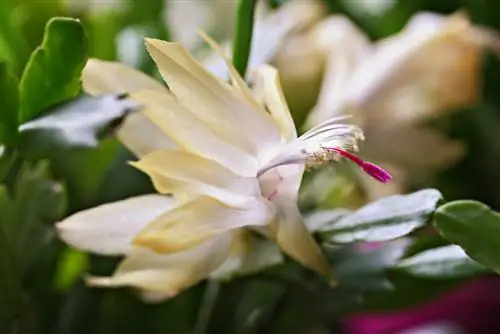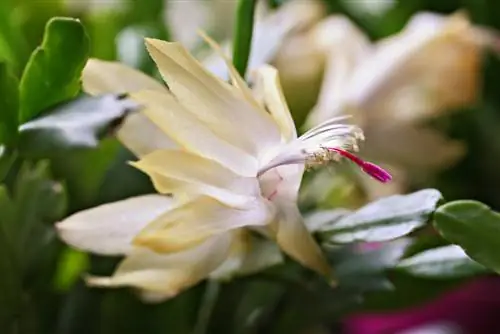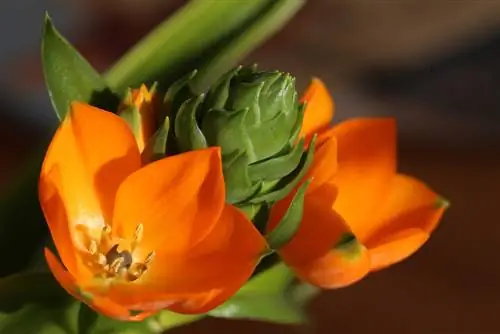- Author admin [email protected].
- Public 2023-12-16 16:46.
- Last modified 2025-01-23 11:21.
To most plant lovers, Schlumbergera is known as the Christmas cactus. The cactus owes its name to the fact that it produces many flowers, especially at Christmas. There are not many species of Schlumbergera that occur naturally.

What types of Schlumbergera are there?
There are six natural species of Schlumbergera: kautskyi, microsphaerica, opuntioides, orssichiana, russelliana and truncata. Known as Christmas cactus, these plants are prized for their showy red or white flowers that appear at Christmas time.
The six natural species of Schlumbergera
There are only six species of Schlumbergera found in nature:
- Schlumbergera kautskyi
- Schlumbergera microsphaerica
- Schlumbergera opuntioides
- Schlumbergera orssichiana
- Schlumbergera russelliana
- Schlumbergera truncata
There are also a number of varieties that were bred as hybrids.
Growth as epiphytes
Some species of Schlumbergera grow as epiphytes on other plants. However, they do not remove any nutrients from the host plants, but rather supply themselves with rain and dew.
Other species belong to the Schlumbergera that thrive in the ground, such as the species russelliana or truncata.
Caring for Schlumbergera as a houseplant
The Schlumbergera has begun its triumph as a houseplant because its beautiful, mostly red, occasionally white flowers appear especially at Christmas time. Caring for it indoors requires a bit of sensitivity, especially if you want the Christmas cactus to bloom for longer than one season.
It appreciates a bright location, but doesn't like direct sunlight in summer. You are welcome to put it outside as long as the temperatures are high enough.
We water abundantly in summer without allowing waterlogging. In order for the Schlumbergera to develop flowers, it is kept slightly cooler in winter at 10 to 15 degrees. The pouring quantities are now significantly reduced. Sometimes you can even achieve a second flowering if you water the Schlumbergera lightly for several weeks after the first flowering.
No more artificial light after flower development
A special feature of Schlumbergera is that it requires short periods of daylight when it has developed flowers. As soon as flower buds appear, place them in a room where no additional lights are turned on. If you do not have such a space available, cover the plant with a dark hood as soon as you illuminate the room with artificial light.
Tip
Schlumbergera is closely related to other cactus species such as Rhipsalis, Hatiora and Lepismium. It owes its botanical name to the French collector of cacti, Frédéric Schlumberger.






